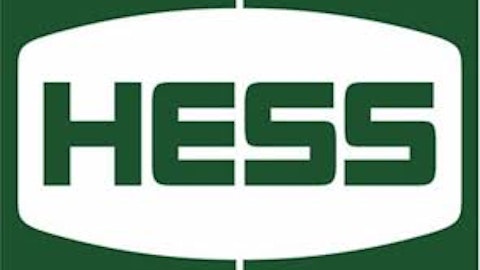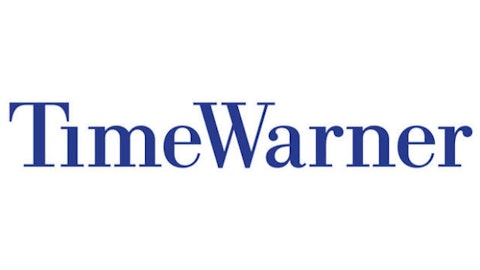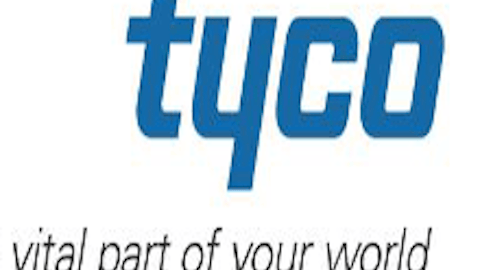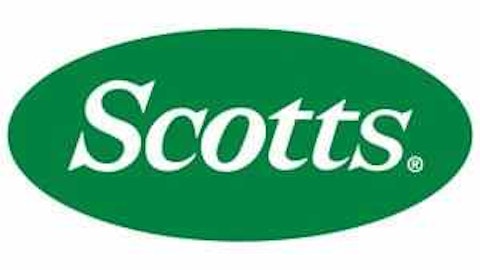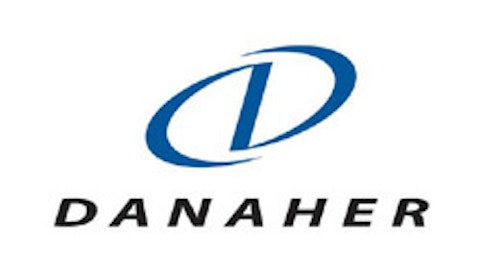Stanley Black & Decker, Inc. (NYSE:SWK) was formed by the merger of Stanley Works and Black & Decker in 2010. Since the merger, all signs point to healthy growth and a good long-term strategy to create value for its shareholders, however shares have lagged the overall market since that time. Although at the current share price the company is very close to its 52-week high, shares are worth just 20% more than they were at the end of 2010. With very strong earnings growth projected, is Stanley Black & Decker, Inc. (NYSE:SWK) one of the few remaining bargains in the market, or would we be better off investing in one of its competitors?

Stanley Black & Decker, Inc. (NYSE:SWK) is one of the leading manufacturers of hand and power tools, and has many well-known brands in its portfolio. Their business is broken into three segments, Construction & Do-it Yourself, Industrial Tools, and Security Solutions. Truly an international company, less than half of Stanley Black & Decker, Inc. (NYSE:SWK)’s sales come from within the U.S.
The Construction & Do-it-Yourself segment accounts for just over half of the company’s total sales and includes tools, lawn and garden products, plumbing accessories, storage systems, and more. These products are distributed to retailers and other customers under brand names such as Stanley Black & Decker, Inc. (NYSE:SWK), DeWalt, and DustBuster.
The Industrial Tools segment primarily makes tools and equipment for use by a variety of industrial customers and is mostly sold directly to the customers. Finally, the Security Solutions segment makes and installs security systems, surveillance equipment, emergency call products, and more on primarily a direct-sales basis.
Growth: past, present, and future
Aside from the major acquisition/merger of Black & Decker, the company has been very active in strategic acquisitions, particularly those that will increase their presence in emerging markets. In 2011, they acquired Niscayah Group, a Swedish security and monitoring company, for $1.2 billion. More recently, in February of this year, the company acquired Infastech, a Hong Kong-based manufacturer and distributor of specialty fastening products, for $850 million. Stanley Black & Decker estimates that this acquisition alone will increase their revenues from emerging markets by 16%. These acquisitions are projected to produce higher operating margins during the current fiscal year and beyond, as a result of increasing efficiency as the new companies become fully integrated into the existing operations.
The numbers
At just 14.5 times the current fiscal year’s expected earnings, Stanley Black & Decker is a very attractive investment. 2013’s expected earnings of $5.44 per share are projected to rise to $6.27 and $6.95 in 2014 and 2015 as a result of the combination of the higher margins mentioned above and increased infrastructure spending, particularly in emerging markets. This corresponds to a three-year average annual forward earnings growth rate of 14.2%, which is excellent for any business, especially one with such a low P/E. Let’s see if this is unique to the company, or if deals like this are found all across the sector.
Alternatives: Danaher Corporation (NYSE:DHR) and Makita Corporation (ADR) (NASDAQ:MKTAY)
Danaher Corporation (NYSE:DHR) is a much larger company, about four times the size of Stanley Black & Decker in terms of market cap. Danaher Corporation (NYSE:DHR) makes tools and process controls for a wide range of industries, including for communications businesses, life sciences, dental applications, as well as for general industrial purposes.
Although Danaher Corporation (NYSE:DHR) is projected to have very strong growth over the next several years (about 11% annual earnings growth), the stock trades at a higher P/E of 18.4 times earnings. While this does sound reasonable, it is nowhere near as attractive as Stanley Black & Decker’s valuation. Also worth noting is that Danaher Corporation (NYSE:DHR) pays a very small (0.16%) dividend yield, which Stanley B&D pays about 2.5% annually, which is sure to attract some income-seekers.
Makita Corporation (ADR) (NASDAQ:MKTAY) is a much more well-known among casual investors as a manufacturer of power tools such as drills, sanders, and rotary hammers. One interesting fact about Makita Corporation (ADR) (NASDAQ:MKTAY) is that is has quite possibly the most attractive financial position of these three companies, with over $1.2 billion in cash and virtually no long-term debt. However, Makita pays no dividend and trades at the highest valuation of the group (23.7 times earnings). It currently is trading at all-time highs, presumably due to the anticipated increase in construction spending that will come if the economic recovery continues.
Buy, sell, or hold?
Stanley Black & Decker looks to be very attractively valued and has not experienced the huge gains that the other two have in the recent past. It is the highest dividend payer, and since the Black & Decker merger has almost doubled its dividend and has reduced the amount of outstanding shares by 5% over the past two years through repurchases. If you think that the economic recovery will succeed (as I do), any company that makes quality products used in construction and infrastructure is sure to benefit, and Stanley Black & Decker is a very attractive way to play it.
Caterpillar is the market share leader in an industry in which size matters, and its quality products, extensive service network, and unparalleled brand strength combine to give it solid competitive advantages.
The article A Cheap Tool Manufacturer With Ambitious Growth originally appeared on Fool.com.
Matthew Frankel has no position in any stocks mentioned. The Motley Fool has no position in any of the stocks mentioned. Matthew is a member of The Motley Fool Blog Network — entries represent the personal opinion of the blogger and are not formally edited.
Copyright © 1995 – 2013 The Motley Fool, LLC. All rights reserved. The Motley Fool has a disclosure policy.
